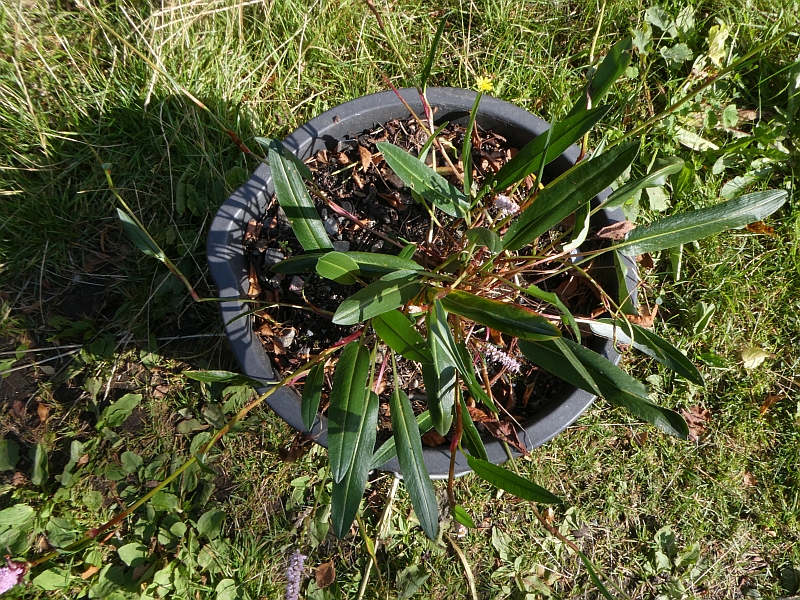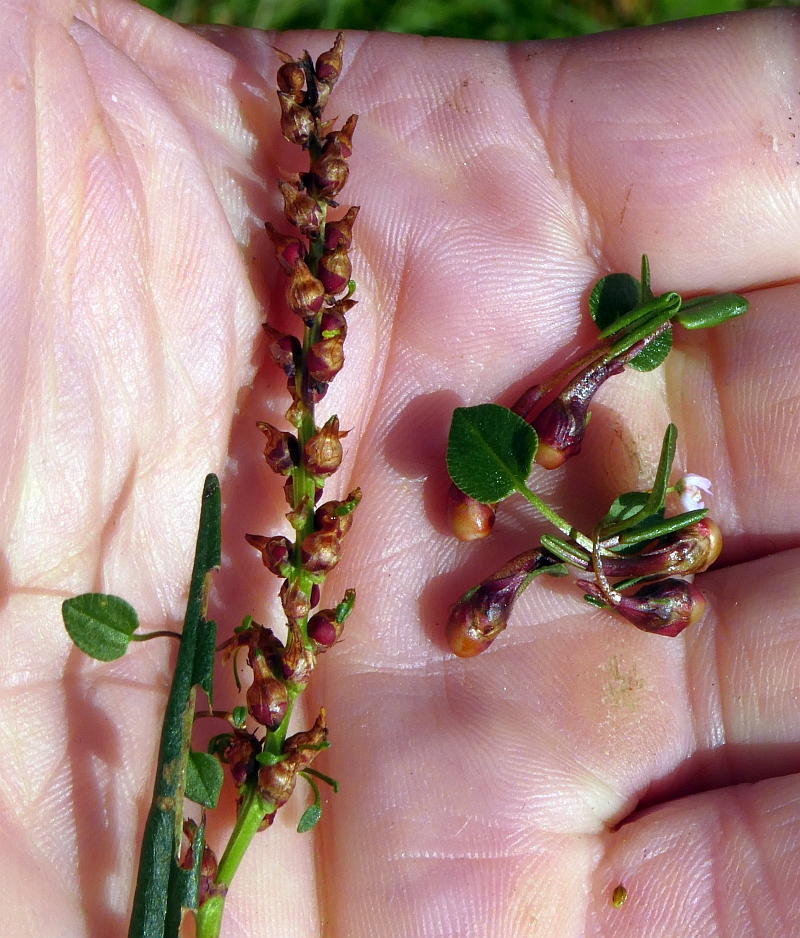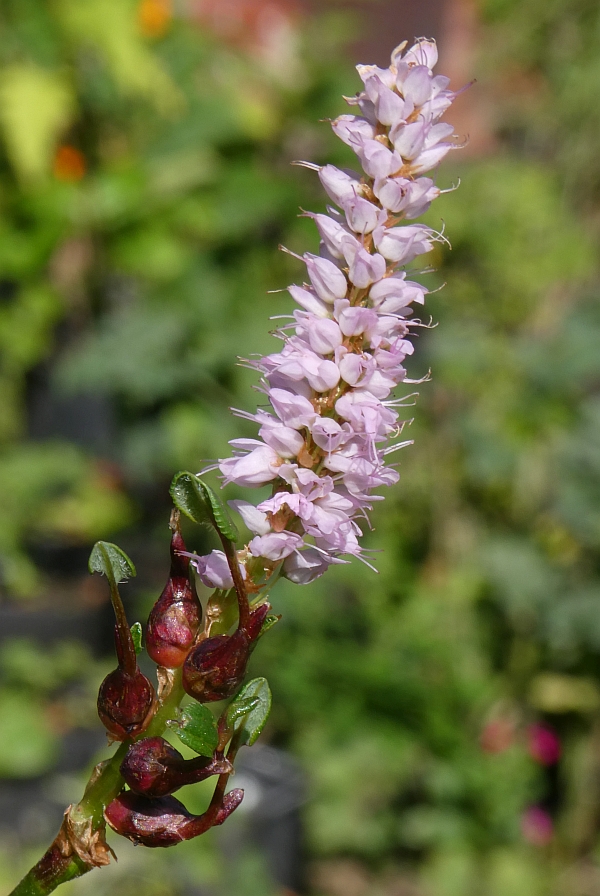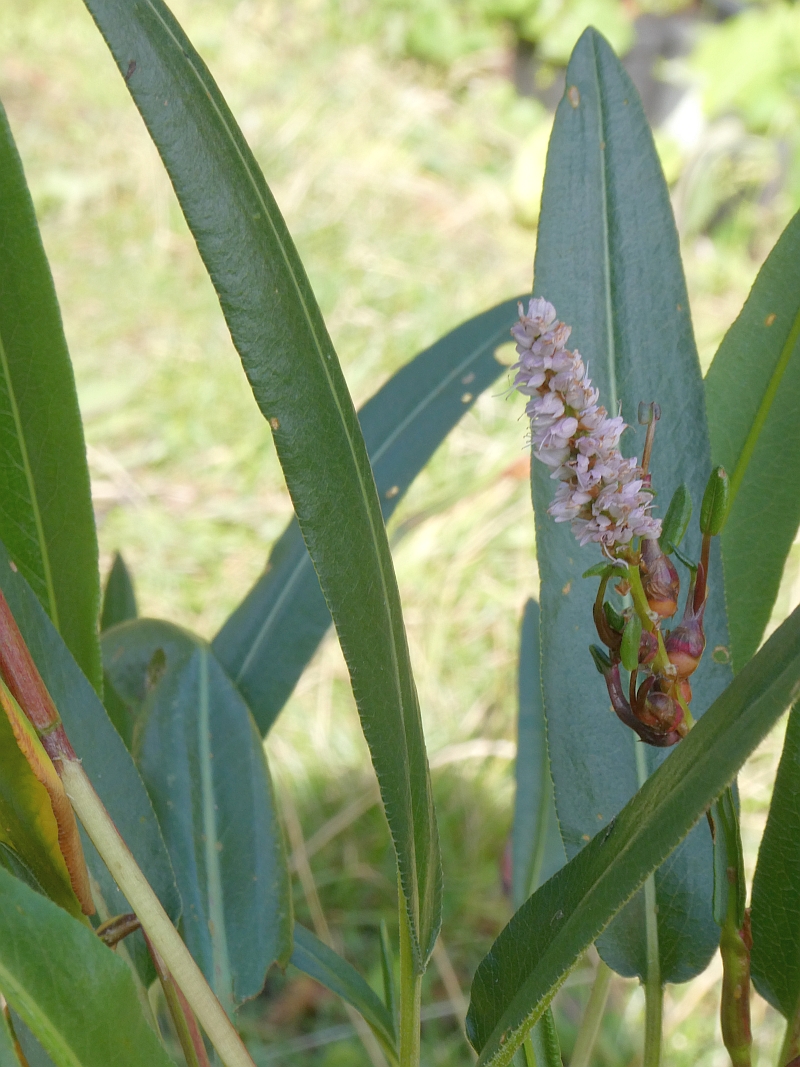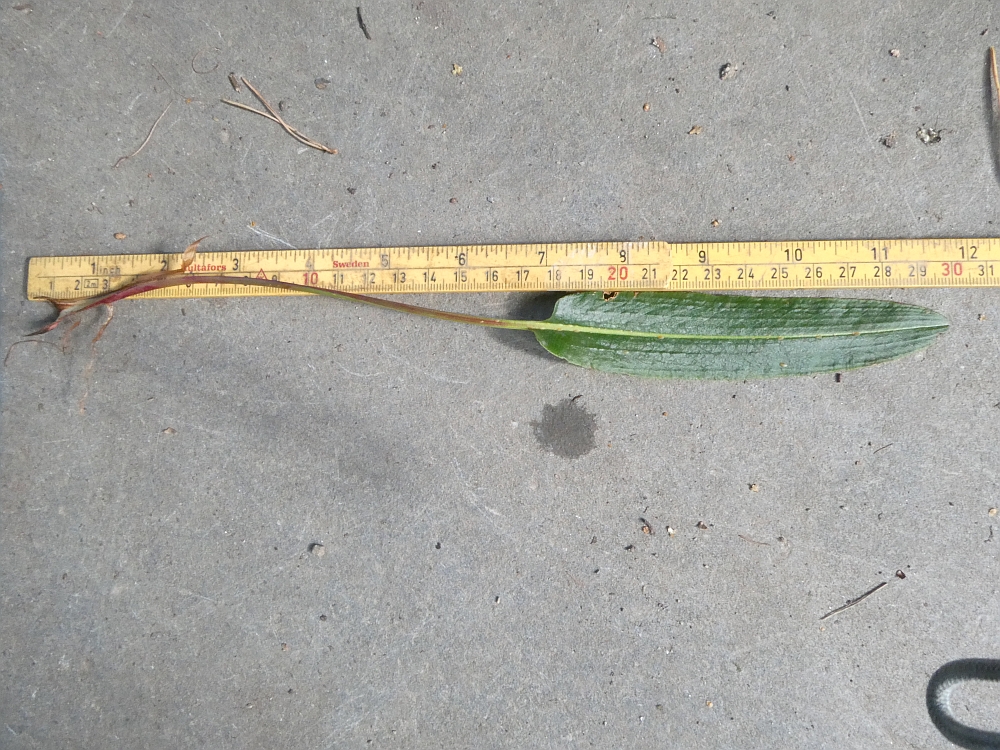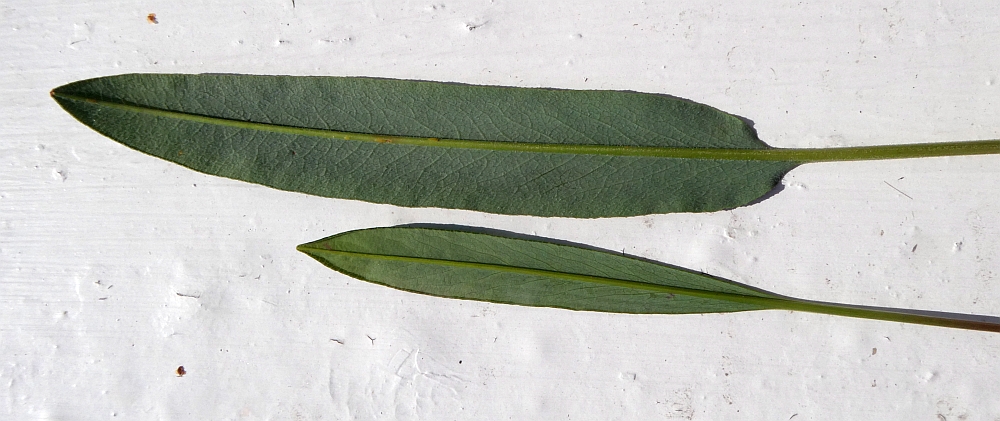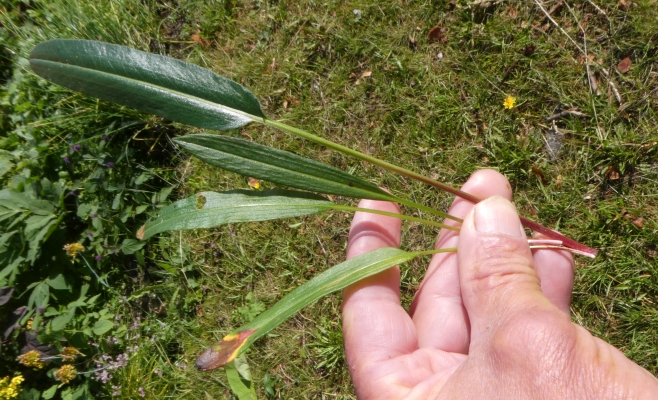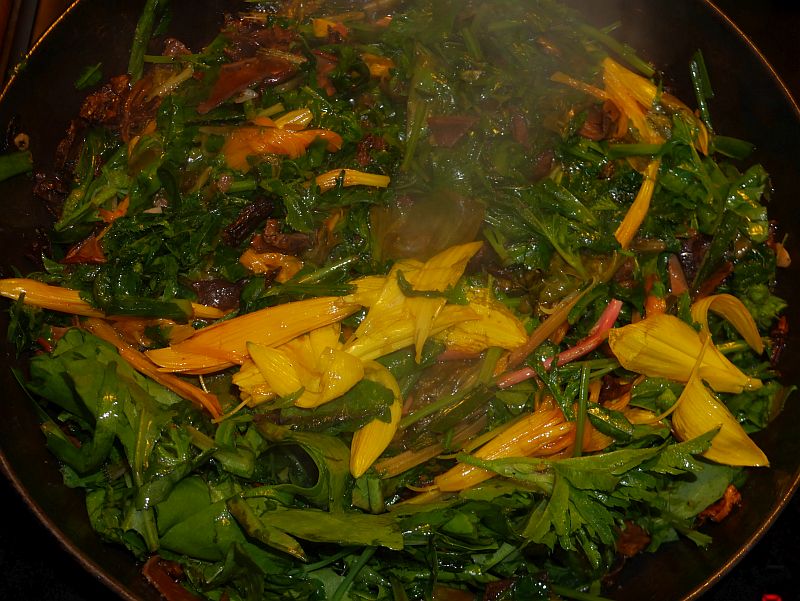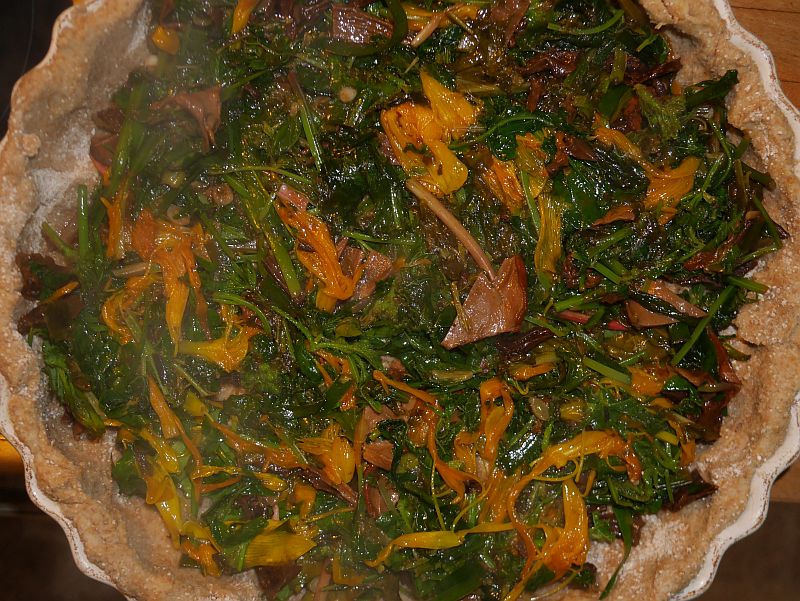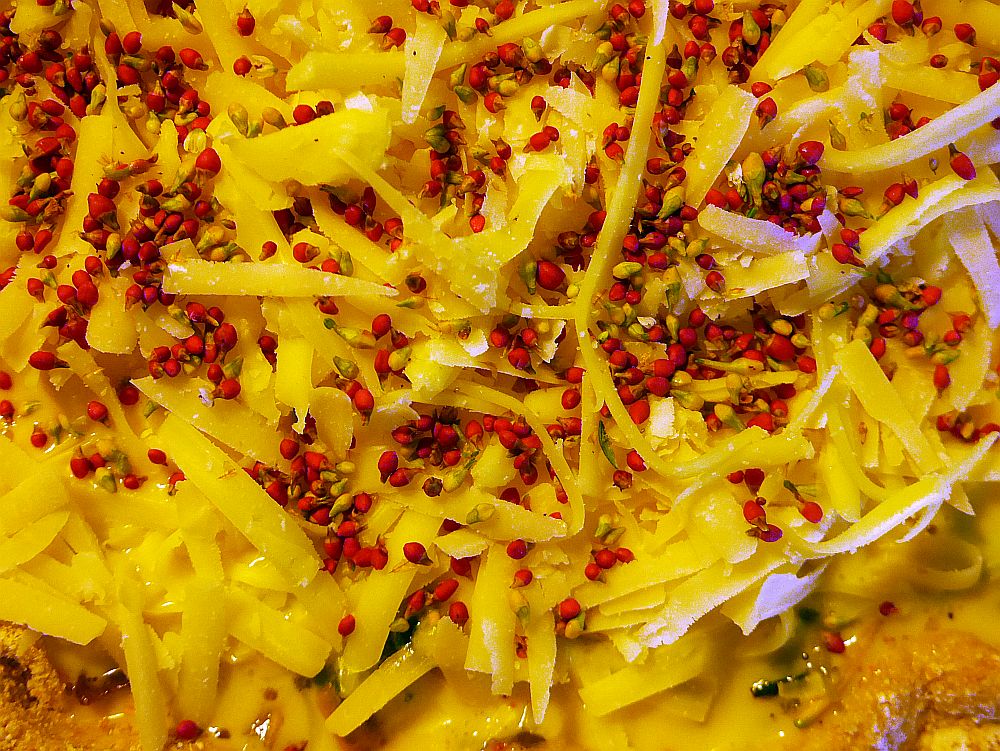I have a small patch of different forms of alpine bistort / harerug (Bistorta vivipara) in the garden and this year’s harvest is now drying in the living room. See other posts on this plant here: https://www.edimentals.com/blog/?s=%22alpine+bistort%22 

Tag Archives: Bistorta vivipara
Large forms of Alpine Bistort
Alpine bistort or harerug in Norwegian (Bistorta vivipara syn Persicaria vivipara or Polygonum viviparum) is a common plant here in Norway and the only wild plant apart from berries that I forage every year. There are large quantities of this plant in particular in the mountains. It’s also one of the 80 in my book Around the World in 80 plants where you can read more. I enjoy it’s nutty taste on bread and other baked dishes like quiches (see https://www.edimentals.com/blog/?s=alpine+bistort)
However, the local alpine bistort here is a rather small plant, typically up to 20cm tall, and is difficult to cultivated as it competes badly with weeds and requires a lot of weeding. I’ve collected forms that seem to be more vigorous, but nothing as large as I’ve seen elsewhere in botanical gardens. In 2002, I found a plant closely resembling alpine bistort cultivated in the Hilliers Arboretum in Hampshire UK. However, it was significantly bigger than our plants. I planted a bulbil in a garden bed, but it spread quite aggressively, a bit like bistort (Bistorta officinalis) and I removed it again. It spread however into the adjacent grass and is still there (I haven’t noticed our native alpine bistort doing this in my garden). I had wondered if it was a different species at the time. Here’s a picture of it (a larger plant with large and many bulbils):
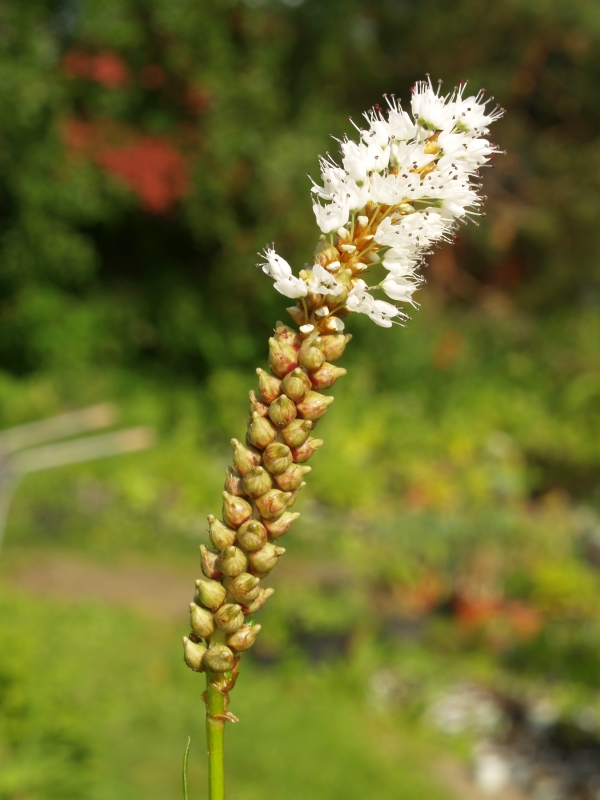
Returning to Hilliers in 2010, I saw another vigorous plant in 2010 (below), more closely resembling our Norwegian plants:


Then in 2017, I saw another viviparous plant, labelled Polygonum spp., in the Gothenburg Botanical Gardens and was given a few bulbils. I’ve grown that one on in a large pot and here are a few pictures taken today:
According to a paper in 2013: “Viviparous bistorts are represented by 3 species in the world, P. suffultoides An Jen Li (1995: 415), B. vivipara (Linnaeus 1753: 360) Gray (1821: 268) and B. tenuifolia”.
Tenuifolia has very narrow leaves and the description of suffultoides doesn’t fit my plant. Among other things it has pubescent leaves (hairs – on both sides).
I don’t have the accession data for my plant (I will try to find out from Gothenburg), but it does almost fit the description in Flora of China of one of the larger forms of Bistorta vivipara. My plant reaches 50cm (15-60cm in FOC); leaf blade 13cm long (3-10cm). The bulbils are large, but there are a larer proportion of sterile flowers, so the yield may not actually be much larger. The pink flowers are within the normal range and I have one variety from Norway with pink flowers. It could also be from North America where large forms exist (usually known as Bistorta vivipara subsp. macounii), reaching 45cm according to the Flora of North America; see http://floranorthamerica.org/Bistorta_vivipara)
I have today dug up a couple of tubers from the grass so that I can grow it out and complete the comparison. Watch this space.
Foraging the Viviparous Bistort
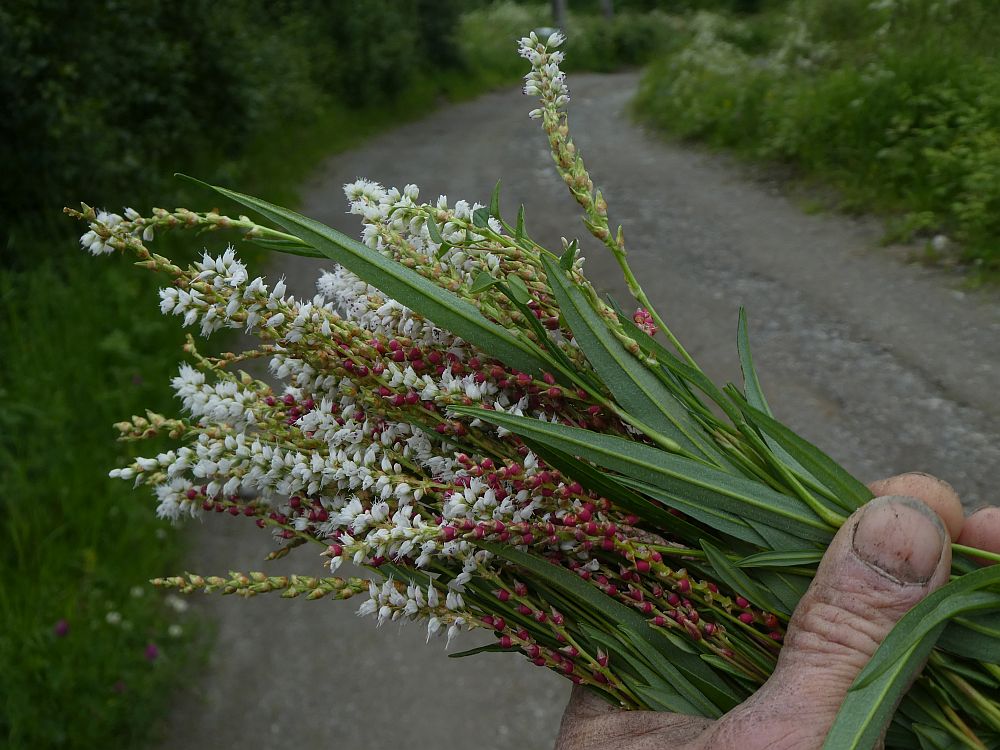
It’s a rare event that I forage outside the garden at this time of year and almost never for leafy greens. I’m trying to find time at least once a week for a walk in the woods and at the weekend I did just that and I was surprised to find that the alpine bistort (viviparous knotweed / harerug) bulbils were ready to harvest. It often grows in large quantities along tracks in sunny spots on the edge of the forest.


We had a perennial veggie quiche for dinner and these were used as as a tasty nutty topping. The vegetables we used included sorrel (Rumex acetosa / engsyre), musk mallow (Malva moschata / moskuskattost), day lily flowers (Hemerocallis / daglilje), various onions (løk), Hablitzia leaves and Hosta.


